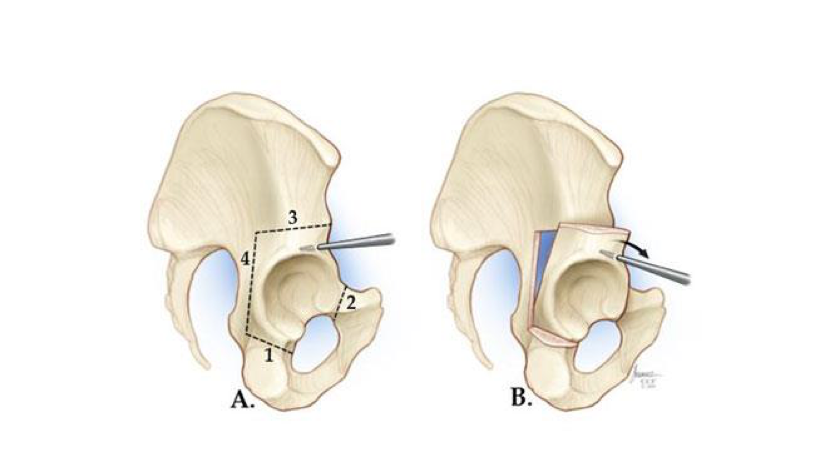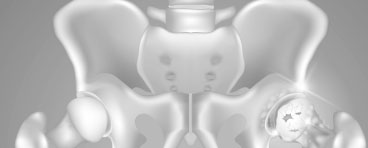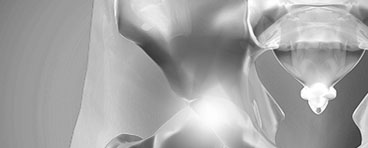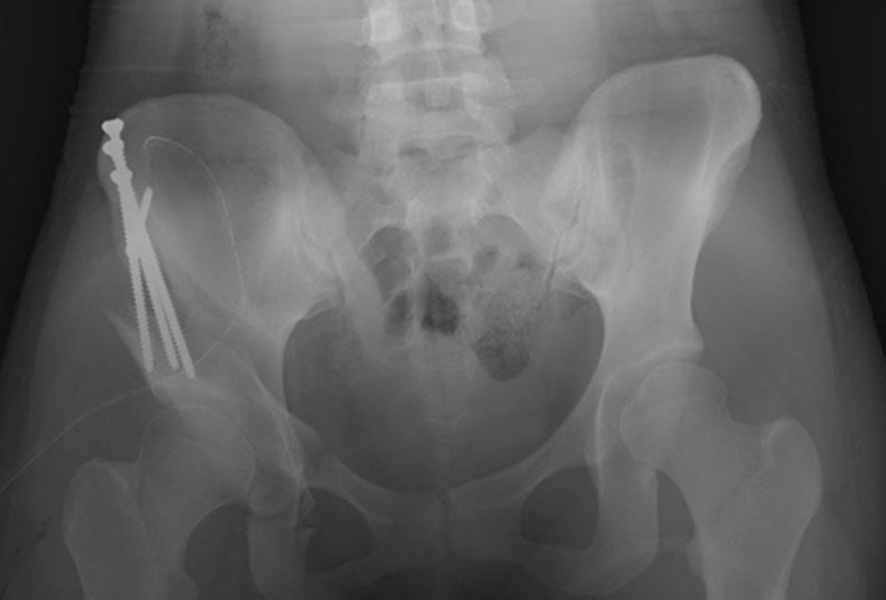Click on the links below to find out more
Hip Dysplasia-Adolescent
TREATMENT
Treatment for adolescent hip dysplasia focuses on delaying or preventing the onset of osteoarthritis while preserving the natural hip joint for as long as possible. Does your adolescent child have pain in the groin that gets worse with activity? Are they experiencing a popping, snapping or catching sensation in the hip? Do they have a reduced range of motion in the hip joint or have difficulty sleeping on their hip? If so, they may be suffering from hip dysplasia.
Symptoms of Hip Dysplasia in Adults
In adults, hip dysplasia can present a unique set of symptoms, often evolving from the condition’s progression since childhood. Adult patients may experience chronic hip pain, particularly in the groin area, which can be exacerbated by physical activities like walking or running. They might also report a sense of instability or weakness in the hip joint, leading to difficulty in activities that require a range of hip motion, such as bending or climbing stairs. Some adults with hip dysplasia may notice a clicking or locking sensation in their hip joint, accompanied by occasional sharp pains. These symptoms are frequently more pronounced after prolonged periods of sitting or upon waking in the morning. It’s important to note that in adults, hip dysplasia can often go undiagnosed for years, as the symptoms can be subtle and mistaken for other conditions. Therefore, it’s crucial for individuals experiencing these symptoms to seek a thorough evaluation from a healthcare professional specialising in hip disorders to ensure proper diagnosis and treatment.
An Expert in Hip Dysplasia Surgery
Dr Slattery is an expert in hip dysplasia surgery having undergone peer training with leading names in the orthopaedic world both in Switzerland and Australia. He has a special interest in hip disorders in younger patients and works tirelessly to improve their quality of life either through preventative treatment or surgery. He has many years of experience in all aspects of orthopaedic surgery, including the latest robotic techniques, 3D computer navigation and 3D printing and continues to learn more about hip conditions through ongoing research projects. Many of these projects involve his current and former patients and he’s extremely grateful for their participation as it is only through research that we can understand more and learn new techniques to improve treatments and surgery for hip dysplasia and give patients better outcomes.
Dr Slattery is also a when it comes to passing on his knowledge and experience to the next generation of specialists in hip disorders. He regularly teaches medical students, junior doctors and registrars, and is a regular contributor of medical papers on a variety of topics to a range of journals. By sharing his expertise, he ensures that high-quality, effective hip dysplasia surgery is more readily available in Melbourne and beyond.
Hip Dysplasia Treatment in Melbourne
Hip dysplasia is the abnormal shape of a hip joint, where the socket of the joint is usually too shallow for the ball. This usually happens during childhood, but if it’s not picked up during routine screening, it can remain undetected. In some cases, the dysplasia may be so mild that treatment is not required. However, if left undiagnosed or untreated, it can cause hip pain in young adults, especially during exercise.
Dr David Slattery specialises in the treatment of hip dysplasia in adolescents and offers a variety of treatment plans, both surgical and nonsurgical to correct it.
What is Hip Dysplasia?
As previously stated, dysplasia of the hip occurs when the ‘ball and socket joint’ of the hip does not form properly in babies and young children. So, let’s explain a little more.
In a normal hip, the ball at the upper end of the femur fits firmly into the socket, the curved part of the pelvic bone also known as the acetabulum. In the case of hip dysplasia, the socket is too shallow to support and cover the head of the femur. This causes increased stress on a smaller area of the joint which often leads to hip pain. As more force is placed on this smaller surface, the cartilage wears away and the labrum (cartilage) becomes damaged. If left untreated, osteoarthritis can develop, which causes the joint to wear away.
What is the Treatment for Hip Dysplasia?
When treating hip dysplasia, the focus is to relieve the patient’s pain, while preserving their natural hip joint for as long as possible. For this reason, Dr Slattery may recommend nonsurgical treatment for hip dysplasia if it is mild and there is no damage to the labrum or articular cartilage. Nonsurgical treatments include observation, physiotherapy, modifications to lifestyle and medication.
However, for some young people, treatment of hip dysplasia will involve surgery to restore the normal hip joint anatomy. Successful surgery will also prevent or delay the onset of osteoarthritis. Surgery is recommended if the patient is experiencing pain and has limited damage to the articular cartilage.
The most common surgical procedure is an osteotomy to place the two joint surfaces in a more normal anatomic position. Dr Slattery is trained to perform the highly specialised periacetabular osteotomy procedure which was pioneered in Switzerland.
In some instances, Dr Slattery may also offer hip arthroscopy as a hip dysplasia treatment in Melbourne.
Communication About Hip Dysplasia Surgery & Patient-Centric Care Comes as Standard
As a leading expert in hip dysplasia surgery and other orthopaedic surgeries and treatments, Dr Slattery strongly believes in the power of open and honest communication. Patient-centric care comes as standard in his practice, and he will only prescribe a treatment or procedure based on your individual needs. He also believes in keeping you informed about every aspect of your care and giving you the information needed to be fully engaged in the decision-making process throughout your treatment. In this way, you can understand any limitations of the treatment or surgery and more realistically manage your expectations.
Dr Slattery is available to see patients from Melbourne and further afield and is happy to offer second opinions for patients who have previously seen another surgeon. He also accepts referrals for second opinions from other surgeons. To date, he has treated a large number of patients including international cricketers, AFL players and elite athletes, so you can rest assured that his surgery and professionalism are second to none.
You can find out more about the costs of surgery for hip dysplasia here.
Contact Dr Slattery for Hip Dysplasia Treatment in Melbourne
Dr Slattery has worked with several orthopaedic surgeon in Melbourne, Australia, the UK and Europe. He’s a fellow of the Royal Australian College of Surgeons and the Australian Orthopaedic Association and has over a decade’s experience undertaking hip dysplasia treatment in Melbourne. He practises a patient-centric approach in all his consultations, allowing patients to discuss their treatment options and plans.
You can book a consultation with Dr Slattery by completing the online booking form or you can contact him at one of the rooms where he is currently consulting.
You’ll find costs for consultations, treatment and surgery on our current costs page. Other than hip dysplasia treatment, Dr David Slattery also offer hip total replacement, hip resurfacing, and others.
Hip Dysplasia Treatment in Melbourne
Nonsurgical Treatment
Mr Slattery may recommend nonsurgical treatment if there is mild hip dysplasia and no damage to the labrum or articular cartilage. Nonsurgical treatment may also be tried initially for patients who have such extensive joint damage that the only surgical option would be a total hip replacement.
Common nonsurgical treatments for adolescent hip dysplasia include:
Observation
If your child has minimal symptoms and mild dysplasia, simply monitoring the condition to make sure it does not get worse may be an option.
Physiotherapy
Specific exercises can improve the range of motion in the hip and strengthen the muscles that support the joint. This can relieve some stress on the injured labrum or cartilage.
Lifestyle modification
Avoiding the activities that cause the pain and discomfort may give may give releif. For a child who is overweight, losing weight will also help to reduce pressure on the hip joint.
Medications
Nonsteroidal anti-inflammatory drugs (NSAIDs), such as ibuprofen and naproxen, can help relieve pain and reduce swelling in an arthritic joint. In addition, cortisone is an anti-inflammatory agent that can be injected directly into a joint.
Surgical Treatment
Mr Slattery may recommend surgery if your child is experiencing pain and has limited damage to his or her articular cartilage. The surgical procedure most commonly used to treat hip dysplasia is an “osteotomy”. Osteotomy literally means “cutting of the bone.” In an osteotomy, Mr Slattery reshapes and reorients the acetabulum and/or femur so that the two joint surfaces are in a more normal anatomic position. Read More
Hip Dysplasia Treatment by Dr David Slattery
Does your adolescent child have pain in the groin that gets worse with activity? Are they experiencing a popping, snapping or catching sensation in the hip? Do they have a reduced range of motion in the hip joint or have difficulty sleeping on their hip? If so, they may be suffering from hip dysplasia.
Hip dysplasia is the abnormal shape of a hip joint, where the socket of the joint is usually too shallow for the ball. This usually happens during childhood, but if it’s not picked up during routine screening, it can remain undetected. In some cases, the dysplasia may be so mild that treatment is not required. However, if left undiagnosed or untreated, it can cause hip pain in young adults, especially during exercise.
As a leading orthopedic surgeon in melbourne, Dr David Slattery specialises in the treatment of hip dysplasia in adolescents and offers a variety of treatment plans, both surgical and nonsurgical to correct it.
What is Hip Dysplasia?
As previously stated, dysplasia of the hip occurs when the ‘ball and socket’ joint of the hip does not form properly in babies and young children. So, let’s explain a little more.
In a normal hip, the ball at the upper end of the femur fits firmly into the socket, the curved part of the pelvic bone also known as the acetabulum. In the case of hip dysplasia, the socket is too shallow to support and cover the head of the femur. This causes increased stress on a smaller area of the joint which often leads to hip pain. As more force is placed on this smaller surface, the cartilage wears away and the labrum (cartilage) becomes damaged. If left untreated, osteoarthritis can develop, which causes the joint to wear away.
What is the Treatment for Hip Dysplasia?
When treating hip dysplasia, the focus is to relieve the patient’s pain, while preserving their natural hip joint for as long as possible. For this reason, Dr Slattery may recommend nonsurgical treatment for hip dysplasia if it is mild and there is no damage to the labrum or articular cartilage. Nonsurgical treatments include observation, physiotherapy, modifications to lifestyle and medication.
However, for some young people, treatment of hip dysplasia will involve surgery to restore the normal hip joint anatomy. Successful surgery will also prevent or delay the onset of osteoarthritis. Surgery is recommended if the patient is experiencing pain and has limited damage to the articular cartilage.
The most common surgical procedure is an osteotomy to place the two joint surfaces in a more normal anatomic position. Dr David Slattery is trained to perform the highly specialised periacetabular osteotomy procedure which was pioneered in Switzerland.
In some instances, Dr Slattery may also offer arthroscopy as a hip dysplasia treatment in Melbourne.
Contact Dr Slattery for Hip Dysplasia Treatment in Melbourne
Dr Slattery has worked with some of the leading orthopaedic specialists in Australia, the UK and Europe. He’s a fellow of the Royal Australian College of Surgeons and the Australian Orthopaedic Association and has over a decade’s experience undertaking hip dysplasia treatment in Melbourne. He practises a patient-centric approach in all his consultations, allowing patients to discuss their treatment options and plans.
As a hip surgeon, Dr Slattery also provide robotic hip replacement surgery, arthroscopy hip surgery, hip total replacement and hip resurfacing. You can book a consultation with Dr Slattery by completing the online booking form or you can contact him at one of the rooms where he is currently consulting.
Periacetabular osteotomy (PAO)
Currently, the osteotomy procedure used to treat adolescent hip dysplasia is a periacetabular osteotomy (PAO). “Periacetabular” means “around the acetabulum.” This is a highly specialised procedure which is done by select surgeons worldwide after extensive training. It was pioneered in Switzerland, where Mr Slattery has undertaken fellowship training to learn the intricacies of this procedure.
In most cases, PAO takes 2-3 hours to perform. During the surgery, cuts in the pelvic bone around the hip joint are made to loosen the acetabulum. It is then rotated, to re-orient the hip socket into a more normal anatomic position over the femoral head. Small screws are used to hold it in place until it heals.

(A) In a periacetabular osteotomy, four cuts are made in the pelvic bone. (B) The bone fragments are manipulated to deepen the socket.
Arthroscopy
This can be utilised in select cases to treat developmental dysplasia, however, it also has the potential to destabilise the hip joint and worsen symptoms. It does not alter the underlying shape of the bone which is of key importance to the long term success of surgery.
Outcomes
Periacetabular osteotomy has been shown in many studies to be successful in delaying the need for an artificial hip joint, relieving pain and increasing function. Whether or not a total hip replacement will be needed in the future depends on a number of factors, including the age of the patient and the degree of osteoarthritis that was present in the joint when the PAO was performed.








